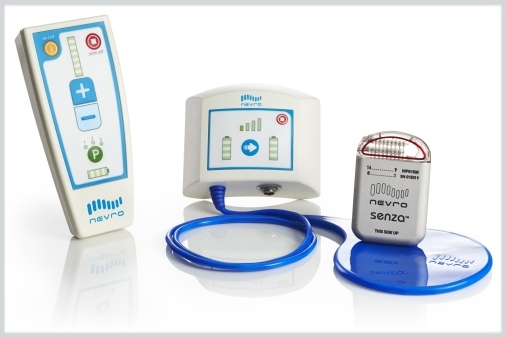The American Society of Anesthesiologists (ASA) submitted a letter to the Centers for Disease Control and Prevention (CDC) in support of their proposed practice guidelines for prescribing opioids,1 but acknowledged that gaps still exist. David Dickerson, MD, chair of the ASA Committee on Pain Medicine, provided suggestions and recommendations for the CDC with regard to their updated guidelines.2
The CDC guidelines were developed in an effort to reduce fatalities associated with the opioid crisis, expanding on the 2016 guidelines,3 which provided recommendations on safe, effective, and informed pain treatment strategies.
Overall, the ASA supported the clarity of the updated guidelines in light of the fact that the 2016 guidelines were often misinterpreted by providers. The ASA agreed with the CDC that these guidelines were not a replacement for clinical judgment and neither were they intended to be applied as a standard across differing patient populations, health care sectors, as a law, or a regulation.
Furthermore, the ASA expressed their support for the lack of prescribing limits or a “one-size-fits-all” dosing strategy. The updated CDC guidelines provided dosing examples within a broader discussion emphasizing shared decision-making between clinician and patient.
The ASA noted that the guidelines stratified recommendations between inpatient and emergency settings and underscore the complexity of treating patients with chronic pain; however, there was a lack of sufficient information on the stratification of postoperative patients.
In addition, the guidelines were noted to have overlooked certain populations with chronic pain, such as patients with cancer, sickle cell disease, and those receiving end-of-life care.
In the letter, the ASA recommended consultation with statements from other guidelines, such as those related to managing acute pain, developed by a novel collaboration between the ASA and 14 other medical societies.
With regard to a specific recommendation about nonopioid therapies, the CDC had acknowledged that evidence was limited for efficacy of nonopioid therapies; however, the ASA noted that the CDC failed to acknowledge that evidence of intermediate to long term efficacy was nonexistent.
For the specific recommendation about opioid selection and dosage, the CDC had discussed the benefits of immediate-release vs extended or long-acting opioids. In response to this, the ASA stated their lack of understanding the reasoning behind the example of 60 mg daily oral morphine and 30 mg daily oral oxycodone when these drugs were not equivalent. The ASA suggested that this example be changed.
For the recommendations about discontinuation of opioid use, the ASA agreed with the CDC that abrupt discontinuation should be avoided but noted that further guidance about opioid tampering should be provided.
For recommendation number 8, the CDC had recommended that all patients receiving opioid doses exceeding 50 morphine milligram equivalents (MME) per day should also be provided with naloxone. The ASA has disagreed with this recommendation by stating that all patients receiving opioids and their household or family members should be provided with naloxone.
Dr Dickerson provided insight on the proposed CDC guidance for opioid prescribing.
Why do you think the 2016 CDC guidelines on opioid prescribing were misinterpreted?
David Dickerson, MD: Many nonclinicians leveraged the preceding guidelines as a standard of care, leading to legislators’ hard-wiring prescribing limits on days of therapy and dosing for chronic pain into law, [affecting] the practice of medicine and potentially threatening physician licensure. Many legislators wanted to show their constituents that they were acting to curb the opioid overdose epidemic, which was quickly becoming the leading cause of accidental death at that time.
What impact did misinterpretation of the 2016 guidelines have on patients and patient care?
Dr Dickerson: Patients were faced with losing access to clinicians willing to continue their therapeutic opioids at the necessary dosing if it was above a 50 or 90 MME threshold, and some clinicians stopped prescribing opioids altogether due to the burden on their practice the guidelines created or the fear of losing their medical license.
How are the recently proposed guidelines different in this regard?
Dr Dickerson: While the current draft guidelines overtly state that they are not a standard-of-care or a blanket approach to pain care, they still include thresholds of concern for prescribers. Similarly, clinical context for the guidelines application is much more specific, excluding populations such as patients who are hospitalized or in acute care settings, such as emergency departments, and in the care of patients with sickle cell disease or receiving end-of-life care. That said, the draft guidelines do lean into more descriptive recommendations for acute and subacute pain as well as specific types of neuropathic chronic pain. Unfortunately, these discussions fail to describe the current state of the art for pain care in those domains, omitting much of the evidence-based treatments commonly employed.
How should the CDC address the gap in information about pain control in acute pain settings?
Dr Dickerson: The CDC should partner with or look to professional societies to create procedure- or context-specific guidance that is patient-centric. This work leverages the existing data to create standard approaches while acknowledging many patients, especially those with chronic pain, substance use disorders, or opioid tolerance may often fall outside of conserved clinical pathways.
Then, how should clinicians address and manage pain in the excluded populations?
Dr Dickerson: This is a complicated question. I think all populations, included and excluded in the guidelines, deserve a comprehensive, vigilant approach that leverages patient education, frequent assessment and reassessment, and meaningful nonopioid therapy, vigilant opioid supplementation, with escalation to expert consultation as the foundation for acute, subacute, and chronic pain care. We have a lot of work to do to ensure our workforce is educated and supported to provide this in all care settings. This may require leveraging telemedicine and other advancements to augment patient and clinician access.
Could you explain the reasons behind why the ASA supports a certain opioid selection and dosing strategy?
Dr Dickerson: Our recommendations promote procedure- and patient-specific approaches to “right size” standardization efforts across the patient journey from injury to recovery and return of function. The ASA supports patient access to and awareness of the gamut of evidence-based pain treatments, whereas the CDC guidelines continue to focus on opioids. This draft offers a piecemeal picture of treatment options with some significant omissions.
How can the CDC be more precise about opioid-tapering guidance?
Dr Dickerson: The draft guidelines move toward a more patient-centric view of dose reduction, suggesting physicians need to think about risks and benefits of continuing opioids or deciding to reduce a patient’s opioid dose. However, patients on higher doses of opioids, who are maintaining function with such therapy, may still be asked to taper due to the relative increased risk for opioid-related injury or poor functional outcomes at such doses. Opioids are a high-risk class of medication and can lead to injury even with the best of intentions. This decision to reduce an opioid dose should be left to the clinician with input and buy-in from the patient. Clearly, behavior such as diversion or misuse requires a direct and prompt reduction of dose recognizing the need to still support the patient during such dose reduction or opioid discontinuation.
References
- Centers for Disease Control and Prevention. Proposed 2022 CDC Clinical Practice Guideline for Prescribing Opioids. Federal Register. Updated February 10, 2022. Accessed April 18, 2022. https://www.federalregister.gov/documents/2022/02/10/2022-02802/proposed-2022-cdc-clinical-practice-guideline-for-prescribing-opioids
- American Society of Anesthesiologists. ASA comments on proposed 2022 CDC clinical practice guideline for prescribing opioids; docket no. CDC-2022-0024 [open letter]. Published online April 7, 2022. Accessed April 18, 2022.
- Dowell D, Haegerich TM, Chour R. CDC guideline for prescribing opioids for chronic pain — United States, 2016. MMWR Recomm Rep. 2016;66:1-49. doi:10.15585/mmwr.rr6501e1






